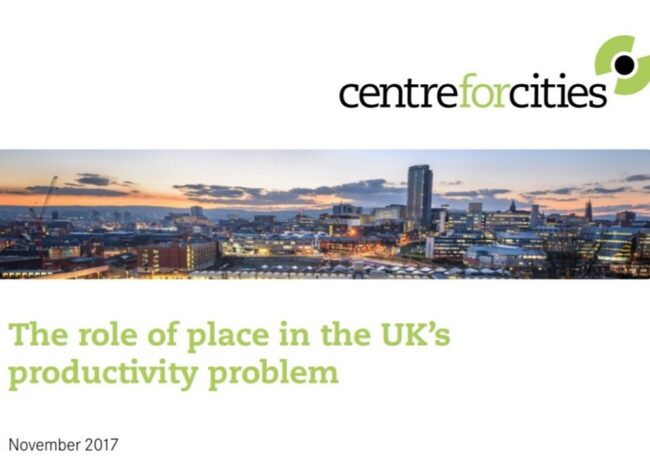Policy shift needed to tackle productivity lag, says thinktank
Centre for Cities has suggested that the ongoing problem of the UK’s productivity gap may need a radical shift in policy if underperforming cities, including Manchester and Liverpool, are to contribute to improving the country’s lacklustre productivity performance.
Using data from the Office of National Statistics, the Greater South East is, says the Centre, by far the most productive area of the country. Fifty of 62 UK cities were below the national average in 2015, with eight of the 12 above-average performers being in the South East. Cities in the Greater South East are far more productive – by 44% – than cities elsewhere.
Many underperforming cities are typified by low export bases and employing large numbers in sectors which, over a 25 year period, have grown considerably in numbers of people employed, but have flatlined in productivity, these sectors including food and accommodation, along with arts and entertainment.
The full report can be downloaded here – this page also contains the interactive graph allowing productivity comparisons between any two locations studied – for example, between Manchester and Reading:
Not not only does much of the country struggle to attract jobs in more productive sectors, when they do secure jobs, they tend to be the lowest-value elements – Nissan, ASOS and Siemens are all named among those keeping high value jobs in the South East and low value jobs elsewhere. Companies locate their high-value jobs in places with access to knowledge, and increasingly, in locations with a ‘dense’ city centre in terms of jobs per hectare.
Because companies working in the same sector in different parts of the country have such fluctuating levels of productivity, said the Centre, the implication for policymakers is that a sectoral approach to policy is not the right one, and that the focus should be on cities not sectors.
Chiefly, this means a priority should be addressing the weaknesses that hold places back from attracting higher skilled, exporting businesses, which is generally access to knowledge and increasingly in the case of service exporters, dense city centres.





Centre for Cities’ pool sizes are highly questionable. In terms of Liverpool it measures only 2 of the 6 city districts, and none of the districts outside the CR.
This makes its output meaningless, as you cannot derive meaningful comparisons. You may as well stick Oranges and Apples in the comparison list.
By Mike